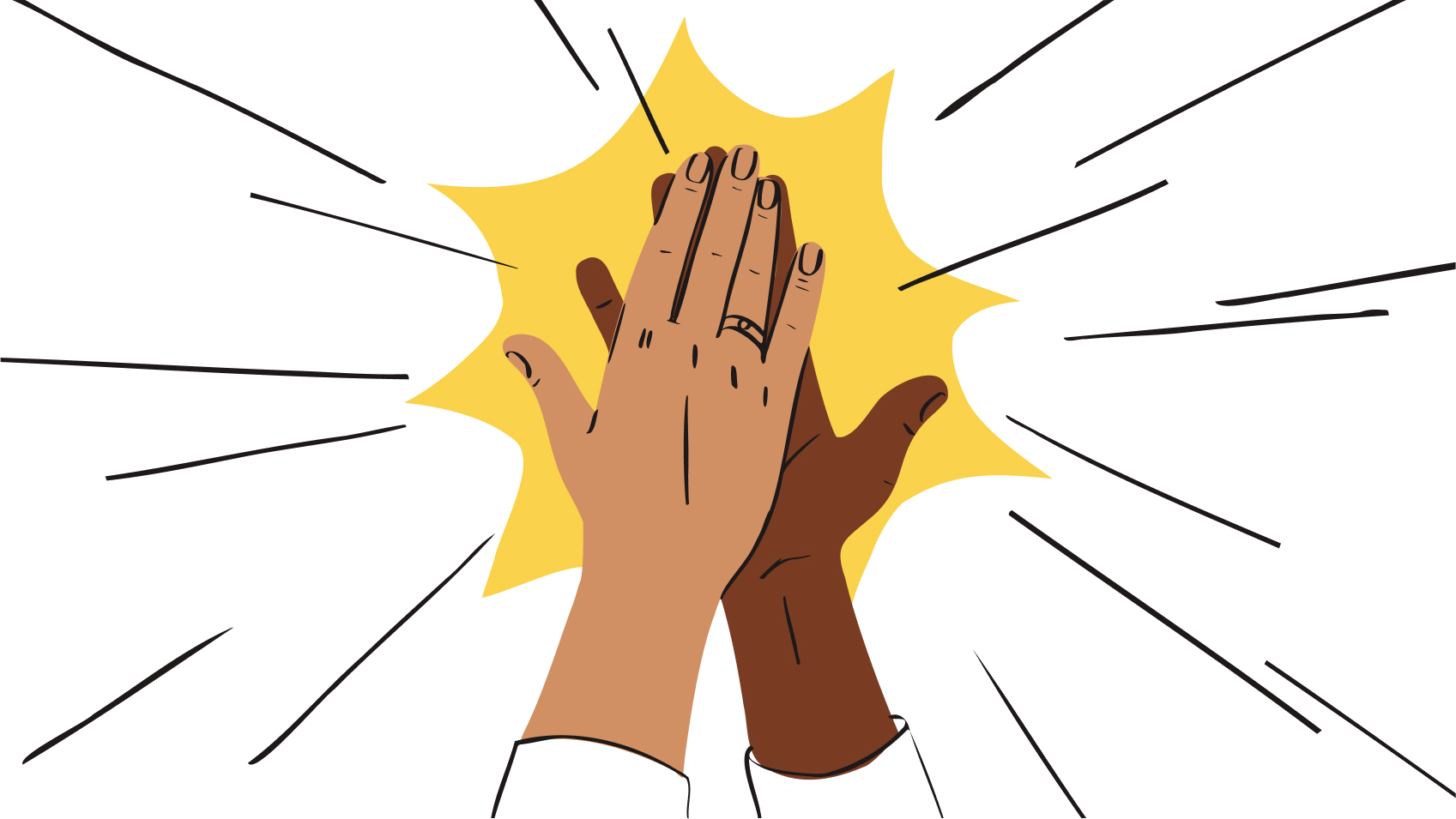When Dropbox adopted the Virtual First model, we knew we had to think outside the box to create opportunities for our distributed team to build connections virtually. In our experience, one of the best ways to build meaningful connections with others here has been by relaxing and having a bit of fun.
So, we tested dozens of virtual team-building activities to see which helped us create a more friendly, productive, and human work environment. Based on our internal research, we found communication, flexibility, and collaboration were key to a successful distributed working environment and engaged team.
We’ll walk you through 15 team-building activities we find make the workplace more cohesive and productive. But first, let’s talk about when to host a virtual activity versus an in-person one.
When should you make your team-building virtual?
When we started doing virtual team-building activities, we ran into a lot of questions, like:
- Why do events virtually if the participants could drive to the location?
- Would they completely replace our in-person events?
- Would our mix of virtual and in-person activities accidentally put some team members at an advantage or disadvantage?
We found that regardless of your team’s working location, there can be advantages to a virtual event:
- It can be more convenient and comfortable to do from home.
- Your office may not have a single meeting room that can accommodate everyone.
- You can use features like backgrounds, breakout rooms, and chats.
- People can access facilities like their own kitchen if the activity calls for it.
But we still love doing some events in person. You might want to do an event in person if:
- Your team has a strong, unified feeling that they’d love to meet in person.
- There are unique facilities, like a park or a gym, that you need for the event.
- It wouldn’t make some team members unduly burdened or disadvantaged.
We’ve chosen the virtual team-building activities we’ve seen make our dispersed workforce feel more connected and categorized them into ones that help you learn something, others that are just for fun, and activities that really help build deeper connections.
Educational virtual team-building activities
There’s no reason your team-building can’t be educational at the same time. In our experience, learning alongside our team members can create lasting bonds while we pick up a new skill. Here are some virtual team-building activities where teams can learn something while having a good time.
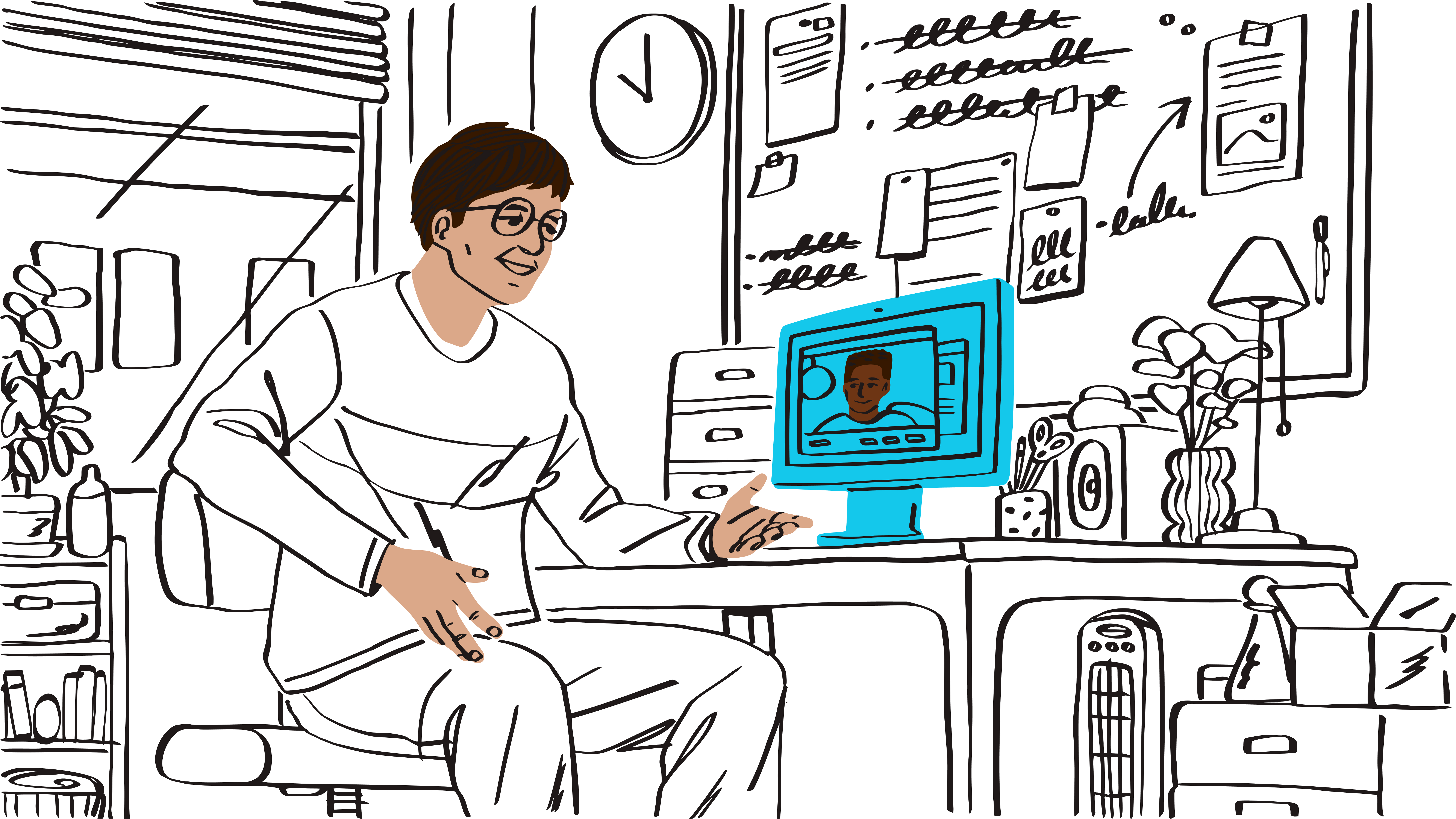
1. Learning sessions
Hearing from your fellow team members about topics they’re passionate about educates team members and builds mutual appreciation and respect. At Dropbox, our teams learn about our products by having our in-house experts provide learning sessions on everything our tools can do.
When we launched Dropbox Dash in beta in 2023, we knew it could be a game changer for our own teams as well as others, making it much easier to find internally stored information. That’s why we had members of our product team give virtual brown bag sessions where any Dropboxer could tune in and find out how to use its universal search. It lets you search for any document across all your file-storing systems and summarizes the results for your convenience. Now that our teams know how to use it, they’re finding the information they need faster than ever.
That deeper product knowledge also means that our sales team can better communicate about the product, our infrastructure team can better support it, and our customer support teams can better troubleshoot it. Plus, the product team gets help understanding common issues or overlooked features by having face time with internal users.
These sessions are especially valuable for building inter-team connections. At a company as large as Dropbox, it could be easy to feel siloed away, each in our separate departments. But learning sessions bridge those gaps, building familiarity between members of the same, broader team.
2. Community clubs
Having something you can all bond over helps to create a real sense of community with your coworkers.
That’s why part of our Virtual First model is our Neighborhoods program, which connects team members who live near each other for events. One of the program’s features is our community clubs—groups where people gather over a common interest, like books or dog walking.
It’s a great way for coworkers to meet online and do something they really care about. Plus, it’s helped us see a different side of our colleagues and improved many team relationships. It even helps with brainstorming—a casual chat with a coworker during one of these activities can give a healthy outside perspective or help talk through a problem you’ve been puzzling over.
Consider surveying your teams to see who has interests in common and helping them create their own clubs. You can create groups in Slack or Teams to form your own Neighborhoods based on geography or common interests. From there, let them decide what activities they want to do organically. You can provide suggestions, but we often find that our favorite ideas come from within the Neighborhoods themselves.
3. Online crafts workshop
Teach your team new skills and take a creative break from work by arranging a crafts workshop. You can ship kits to the participants so they can create something more elaborate than if they DIY’d it. Or if the supplies are easy to get hold of, you can have team members find their own supplies and reimburse them.
For crafting ideas, consider making bonsai, building a topiary, or making wreaths. While plants might be hard to ship internationally, you can use artificial wreath kits like these from With Confetti to ensure everyone can participate. They have wreaths fitting a variety of seasons, color schemes, themes, and holidays.
At Dropbox, we’ve offered flower arranging and tie-dye activities for fun, fast projects, and they’ve been quite popular. We like to ask around to see what hobbies or crafts team members are already passionate about and see if anybody wants to lead a session.
But you don’t need to stick to your team’s existing skills. You can also ship a kit to a willing colleague ahead of time so they can learn a new craft and lead the workshop. That way, you can keep the good ideas coming and expand your team’s skills even further.
Every time we do a crafts workshop, we learn more about our team members’ skills and talents. Plus, we get to express ourselves creatively and see how each of us takes the same instructions with a slightly different spin.
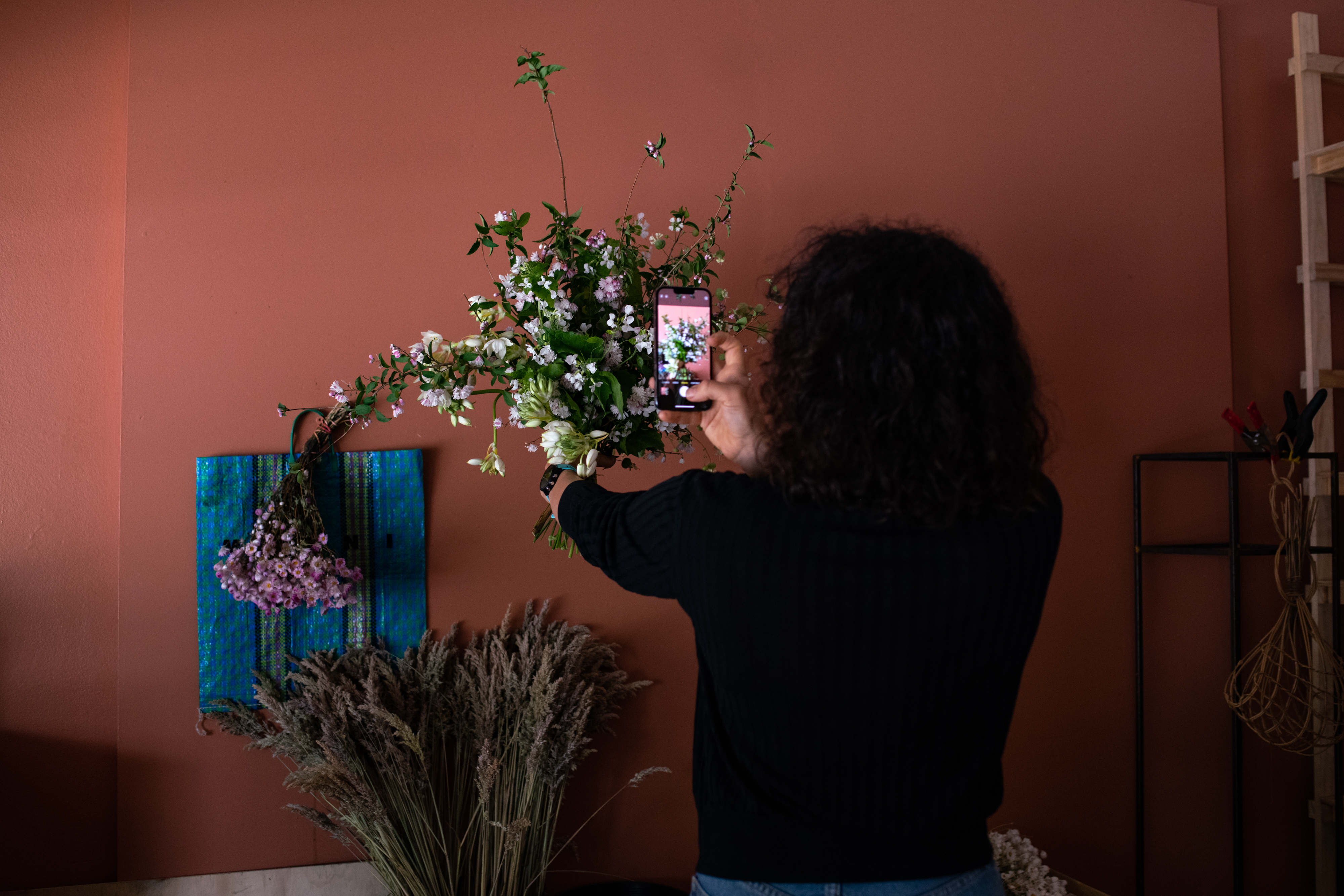
4. DIY home-office hacks
When we fully embraced Virtual First, we quickly realized that setting up a complete home office wasn’t in everyone’s skillset. Our team needed expert advice on how best to turn their home into a place they could work from. That’s why we got professional consultations from our design vendor on how to improve our team’s work-from-home setups.
In fact, that initiative provided such great insights that we put the main takeaways into our "Create a healthy WFH experience" exercise. It walks you through how to discover your work-from-home style with the work-from-home worksheet and then shares advice on how to adapt your office to that style.
The toolkit emphasizes the importance of personal touches like:
- Including a live plant to improve air quality and make you feel better.
- Using art and personal touches to make you feel more at home.
- Using music to help put you into a state of “deep work.”
It also covers tips on important subjects such as how to create an ergonomic office setup and minimize distractions when working remotely.
Doing this type of home office overhaul together can turn a simple interior design exercise into a team-building exercise. Everyone can compare their working styles and how they could improve their home offices and get inspired by other team members. In the end, your team will know more about each other and about how to work better together.

5. Meditation and mindfulness session
Take a breath…now keep reading.
When we hosted 30-minute virtual sound bath meditation sessions, it was a hit. Meditation’s relaxing effects made many of our team members feel better right away, and it’s no wonder. Meditation has been shown to improve fatigue and sleep quality, which can, in turn seriously impact your team’s productivity, reduce stress, and increase focus.
Picture this: cozying up to a guided meditation session led by a professional or tuning into a live stream on YouTube or Twitch.
To create a productive, meditative environment, make sure everyone can feel comfortable. That means your session should work, whether sitting, standing, or lying down. Let participants know beforehand that they should wear comfortable clothing and put their phones on “do not disturb” for the duration of the session.
As Dr. Jeremy Bailenson of Stanford University told us on our Remotely Curious podcast, looking at your face and others’ during a video call “can be exhausting and create unfair pressures on women especially,” making it difficult to relax and meditate. So, let participants know in advance that it’s okay to turn off their cameras and microphones if it makes them feel more comfortable.
6. Book clubs
One of our favorite ways to learn and bond at the same time is with book clubs. Our executive leadership team leads by example here, regularly sharing a book they’re all reading and discussing together.
That way, everyone else at the company can get on board, too, discussing books like Working Backwards by Colin Bryar and Bill Carr, Good Strategy Bad Strategy by Richard Rumelt, and Zone to Win by Geoffrey Moore.
For your own virtual book clubs, having similar executive buy-in can be a huge help. Once you’ve picked a title and found out who’s interested, organize smaller groups where people can discuss them without the entire company present. Choosing books that speak to current business problems or your team’s interests is a good place to start, and make sure people have time to prepare and write down some questions and observations before they meet.
Fun virtual team-building activities
In our experience, one of the best ways to build meaningful connections with others here has been by relaxing and having a bit of fun. Here are a few activities that have helped us do just that.
7. Wellness workshops
Our past Wellness Weeks have been reminders that we can work well when we feel well. During these weeks, each location created intentional programming to promote team wellness across our distributed locations.
The activities we chose varied depending on the interests and needs of the people in each area. For example, one Wellness Week included a local vendor fair, where people could learn about their wellness possibilities while listening to live music, sampling essential oils, and snacking on acai bowls. Many of our employees hadn’t heard of this popular health food and were happy to find out how it could improve their well-being and maybe even lower their blood sugar and cholesterol.
Another session focused on mindful coloring. By combining mindfulness with a simple physical activity like coloring, you can keep your body busy while leaving your mind free to focus internally. It was a great way to help employees process emotions and enter a calm, meditative state.
It’s important to have variety because wellness can look different for everyone. By including different activities, you ensure there’s something for each team member.
Some simple ideas for your wellness workshops could include:
- Weekly or daily step-count challenge (or equivalent distance on exercise bikes or other equipment).
- Weekly team online workout sessions.
- Team yoga classes.
You can do live workouts through online services. Grokker is a popular platform that offers fitness, yoga, and cooking classes designed for a variety of wellness goals. Glo focuses more on yoga and meditation and even offers classes where your team can learn about the philosophy behind those practices. Daily Burn is more fitness-focused, with thousands of classes to choose from and social media integrations that make it easy to support others using the same platform.

8. Remote talent show
We heard we had some amazing talent to unearth at Dropbox, but we weren’t ready for what we heard at “Dropbox’s Got Talent.” The virtual event created by EMEA team members featured juggling and musical performances, among some of the acts. We think everyone can have a similar experience discovering the amazing talents their own teams have, too.
Once you have your idea, ask for acts. Remember, that’s what makes the whole show possible, so you want to get solid commitments from at least a few of your key performers before moving forward.
Then, you can decide who will MC the event. You can select a single lucky team member yourself or include everyone who volunteers by creating a rotating cast of hosts like many popular awards shows.
Work alongside your host or hosts to decide the order of the performers and how you’d like to introduce each one. Using a virtual meeting tool like Google Meet or Zoom, participants can perform live or share pre-recorded acts.
You could have a panel of judges or a voting system to award small prizes. Feel free to let them vote with a Google Form or a poll in your video calling platform, and offer a virtual prize like a gift card so your winners can get their rewards right away.
9. Virtual coffee chat
Ever since we started with Virtual First, we’ve implemented virtual coffee breaks to maintain team cohesion and employee morale. It brings back those water cooler vibes with casual chats and gossip. Plus, when else can you show off cute pet photos?
We make our virtual coffee chats 1:1s to create a more personal experience and long-lasting connections without the awkward group silences. But arranging casual chats can be a little awkward, which is why we like to simulate serendipity by randomly pairing people to talk via Zoom or the Donut Slack extension.

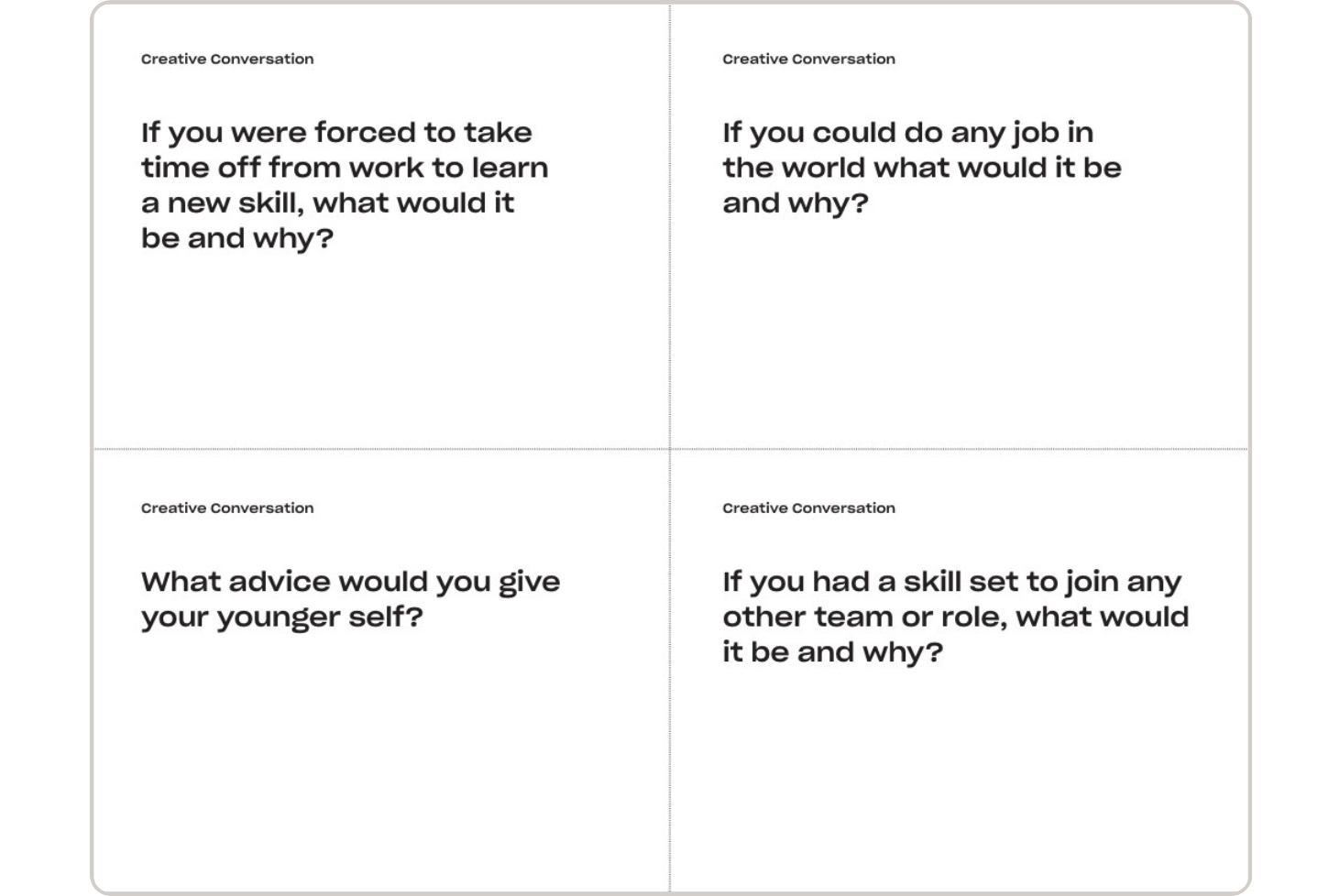
These questions, like “What qualities do you value in collaborative projects? What qualities do you find challenging?” dig a little deeper and provide lessons that could prove useful when working together on a task.
You can also do a group version and add a little fun to help the conversation flow. How about some mocktails or cocktails and turn it into a virtual after-work instead?
10. Karaoke party
At Dropbox, karaoke has become a beloved tradition. It’s a great way to destress, showcase musical talents, cheer on colleagues, and deepen connections within the team.
We’re so passionate about karaoke that when we had our San Francisco headquarters built in 2016, we included a room called the Karaoke Bar—an ode to employees’ favorite San Francisco bar, The Mint. It has those garage band vibes that help us relax, unwind, and jam together.

To set your karaoke up remotely, you can use a virtual karaoke platform like Karaoke Nite or Virtual Voicebox via Zoom. Check out each platform beforehand so you can troubleshoot any potential issues and see their song selections. They work in similar ways, although you have to pay for Virtual Voicebox, while Karaoke Nite is free, albeit with a more limited tracklist.
You can even ask your team for favorite songs or artists ahead of time and make sure they’re available on the platform you choose. Once they’re online, consider using a random number generator to pick who goes first if nobody volunteers right away. To encourage shyer team members, you can encourage duos and group songs. You can also include silly prizes that don’t involve singing abilities, such as the best costume or the most mismatched song and singer.
11. Group movie night
Popcorn? Check. Blanket fort? Check. Get ready for a group night in.
Chatting about a movie can help build camaraderie among remote teams and is great conversation fodder both during and after the viewing. You can even connect the movie to a heritage month like we have at Dropbox, playing "Everything, Everywhere All At Once" during Asian Pacific Islander Heritage Month.
Pick a streaming platform that offers group watch features. Teleparty lets you do this with Netflix, and Disney+ uses SharePlay to allow you to watch while talking via FaceTime. Just provide the link to everyone, making sure they’re watching the same version of the same movie or show. That way, team members can watch together and comment via chat or voice.
We know it’s not always easy to get everyone together for a full-length movie. If your team struggles to find the time, you can break your movie night up into multiple, shorter viewing sessions or opt to watch a short film or an episode of a favorite show.
When you’re organizing an event like this, what you watch can be just as important as when you watch it to get others involved. That’s why it’s a good idea to poll your team about what movies they especially want to see and any content or genres they’d rather avoid. By asking this anonymously with an online poll, you can expect honest answers that’ll help you make it the best experience possible for everyone.
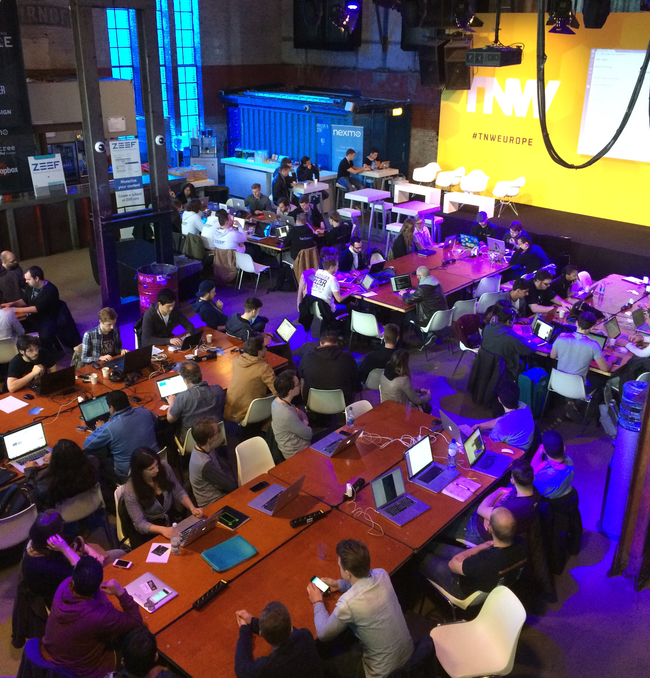
Great get-to-know-each other team-building activities
Part of the reason for these events is for your entire team to forge lasting relationships, which doesn’t come naturally for everyone. Here are some activities that can help your teammates get to know each other and create deeper bonds.
12. Corporate tarot connection cards
No, we didn’t consult a fortune teller for these, and they might not tell your team’s future. But we use this unique spin on classic tarot cards to spark conversations and get an insight into how our teams work together.
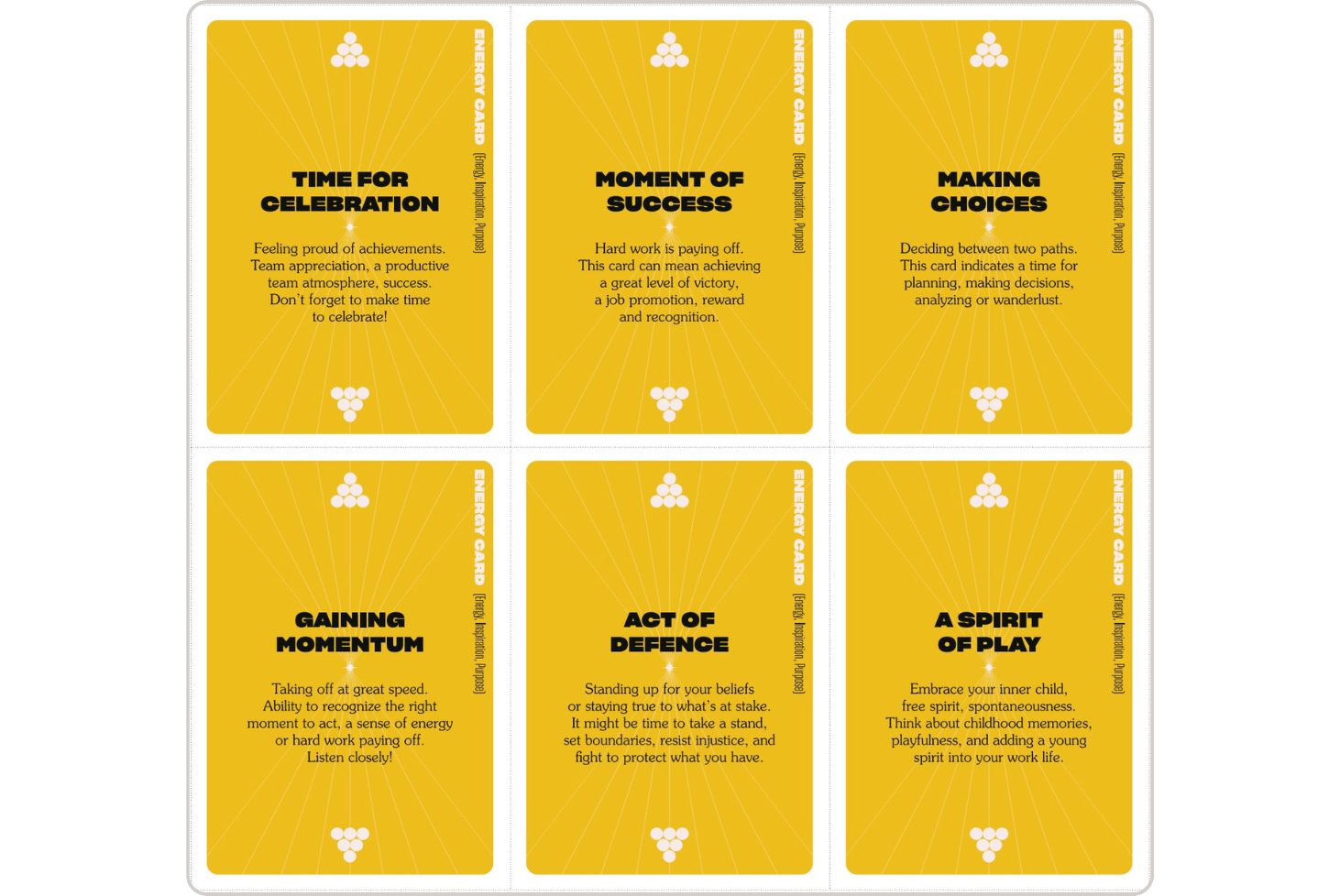
The idea here is that it’s a fun format for questions and hypotheticals that will prompt a conversation about how each of us thinks and works. They’re all related to workplace dynamics, personal strengths, and collaborative challenges.
Whether we’ve been working with someone for a long time or have a new team member, we find that they can help people express hopes and concerns that they might otherwise not have put into words. That makes our teamwork smoother and gives us insights into how our team members think.
You could open a small group or a 1:1 meeting by flipping just one card to prompt a conversation. Or, you could make it a more extended activity, following the instructions in the PDF to pull four cards and use each to discuss your current situation, challenges, chances for development, and team dynamics (in that order).
When we use these cards, we often find it’s best to open the conversation by affirming that it’s a safe space to discuss challenges and mistakes. That way, everyone present can feel secure that we’re in a supportive and constructive environment and that whatever comes up during the session won’t be discussed with anyone else.
13. Creative energy sessions
Some people love folding laundry, and others think it’s the most boring thing on the planet. The same ideas apply to work—there are tasks we enjoy that our coworkers may dread. Figuring out which is which helps us improve flow and harmony.
That’s why we created the “Creative energy worksheet.” By working through it with our teams, we find out what brings our team members energy and what drains it. Then, everyone can be conscious of what projects give them—and their team members—flow and fulfillment.

The sheet works by mapping activities along two axes: First, whether the activity brings you joy, pain, or something a little tamer. The second axis is “purpose,” or whether you resonate with the “why” of the work. Not everything has to be high-purpose and bring you joy, but you’ll likely find that the activities you score high for in at least one category are the ones you’re most excited about.
Once you’ve mapped out your own worksheet, the group activity begins. You can start building a stronger team by comparing one another’s grids and suggesting ways to generate more joy and purpose in each other’s work. For us, this is the most fun part. It’s where you learn something new about the people you’ve been working with. And you might just learn something new about yourself, too.
14. Virtual charity drives and volunteering
Organizing virtual charity drives and volunteer days provides meaning to what we do at Dropbox. It brings us closer to our teams and communities, by bonding through supporting the causes we all believe in. Teams can choose a cause they’re passionate about and work together to contribute, whether through donations or volunteer hours.
At Dropbox, we celebrate Impact Day twice a year. It’s a day when every Dropboxer has the opportunity to donate their time and energy to a cause they believe in. Instead of working, they take volunteer time off (VTO) to commit to helping others. On November 2023 Impact Day, we committed over 170 hours to volunteering at more than 45 nonprofits.
We also donate Dropbox on top of our time. For your own case, consider how your company could donate a product or service as well as your team’s time. You can also honor some of your most outstanding volunteers with an award, like we do with our Big Heart Award.
Vote for a charity your team cares about deeply, whether it’s supporting international organizations like Doctors Without Borders or American Red Cross through disaster response efforts or providing skills-based volunteering efforts to support your organization’s philanthropy arm like the Dropbox Foundation. The ideas are endless to find ways to support your company’s social impact initiatives!
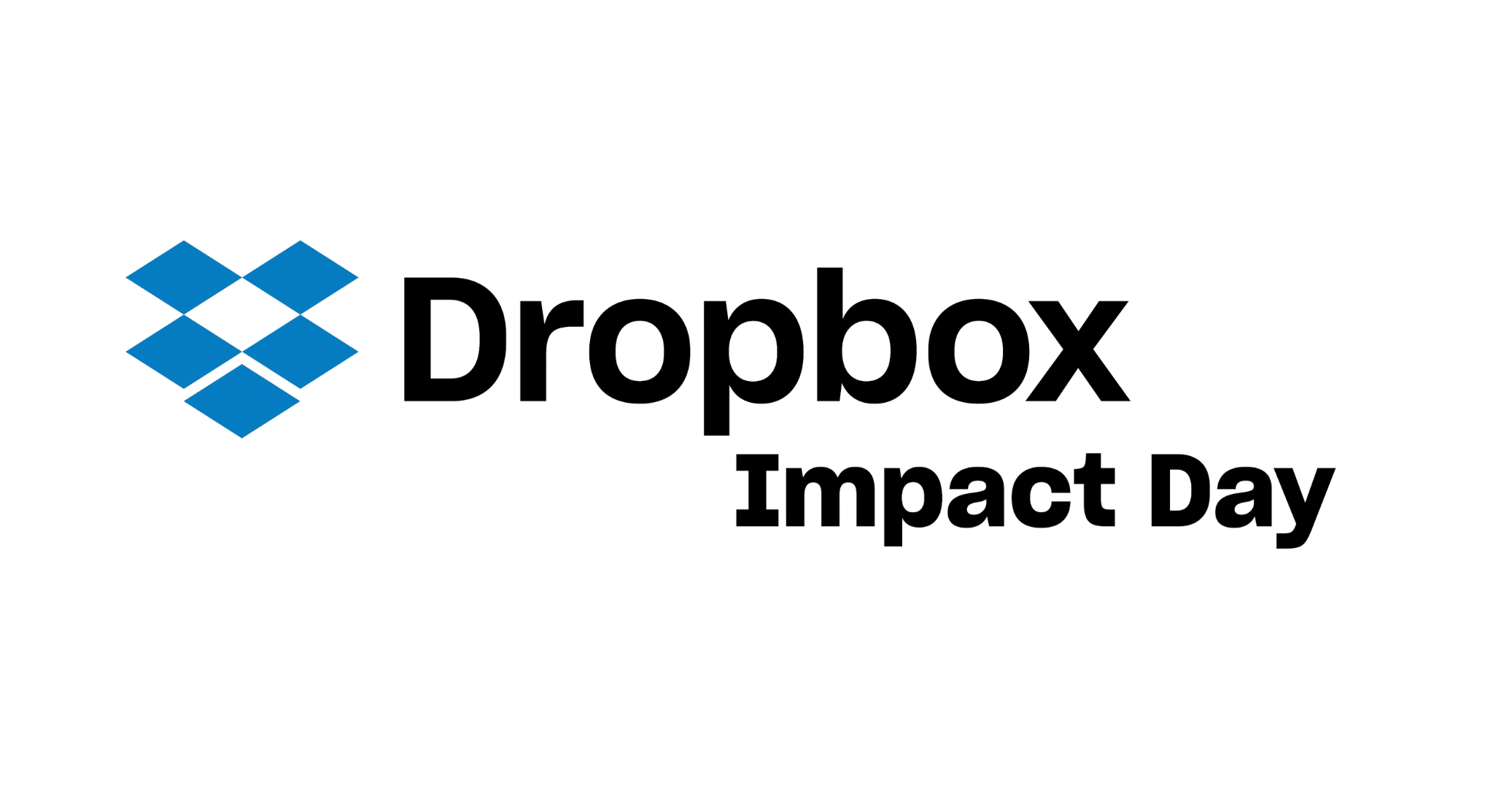
15. Hack Weeks or innovation sprints
It's time to think outside the box by channeling your team’s inner genius and teaming them up on awesome projects.
Virtual Hack Weeks are an innovative way to encourage problem-solving and teamwork. These events involve team members collaborating intensively on software projects or company challenges, often developing new ideas or improvements to existing products.
At Dropbox, our Hack Weeks have been a cornerstone in promoting a company culture of innovation and collaboration. They break the routine and bring diverse skill sets together, resulting in actual solutions and better dynamics across our entire team. Plus, it’s exciting to push your creativity to its limits with a deadline and a prize on the line.
The core of the program is setting a theme or a challenge and then setting our “hackers” free to explore it together. Giving them the time and space to commit to a creative project makes them feel more excited about their work and willing to go the extra mile to solve interesting problems.
You never know what great outcomes could come out of your hack week. In our case, a joke from the HBO show Silicon Valley and the opportunity of Drobox’s Hack Week inspired one engineer to save us millions with better video and image compression. Encourage that kind of creativity and see what results your team is inspired to create.
Make your team-building events something to remember
With all these ideas, you can organize team-building sessions every month or even every week of the year if you want. After all, relationships take time and exposure to grow. You could even let employees vote on which ideas appeal to them the most—they're more likely to engage if they're involved in the decision—and create a team-building activities calendar for the next 12 months. See more information on how to form virtual team bonding rituals here.
Having these regular sessions is an investment in your company's culture and your brand as an employer. The result? A happier and more productive team.
If you want your virtual meetups to go as smoothly as possible, you’ll want to break the ice with a fun and creative way to get started. For some ideas on how to do that, feel free to check out our guide to virtual icebreakers here.
